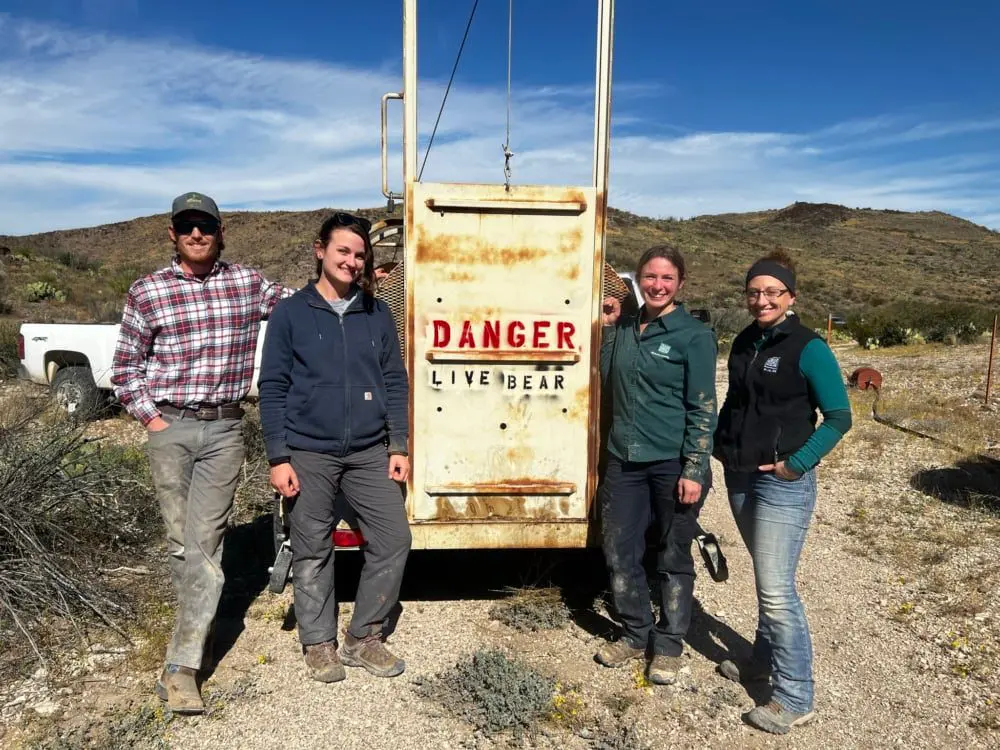On the eve of Dec. 23, 1909, black ink soaked the Fort Worth Record and Register newsprint to tell readers of a sought-after protein with Christmas just around the corner.
“Bear Meat. Fat and Juicy. At the Model Meat Market. 604 Houston Street. On Sale Friday.”
Today, 113 years later, such an advertisement is unheard of, largely because grocers no longer sell bear meat, but also because black bears haven’t maintained a consistent presence in Texas since the 1950s.
The population was nearly gone until 1988 when a visitor to Big Bend National Park saw a mother black bear and three cubs, indicating a reemergence of a breeding population.
The initial spotting garnered close attention from the Texas Parks and Wildlife Department for decades. However, a substantial number of black bears now moving from northern Mexico into the Big Bend and Del Rio regions has prompted a multiyear study that aims to effectively facilitate the comeback of Texas black bears.
The program, called “Understanding Natural Recolonization of Black Bears in West Texas,” is the product of a partnership between Borderlands Research Institute at Sul Ross State University and the Texas Parks and Wildlife Foundation, as well as funding from the Houston Safari Club Foundation.

“It is a rare opportunity that bears are recolonizing like they are now, 75-100 years later,” said BRI Director Dr. Louis A. Harveson. “It’s pretty damn remarkable that this is occurring.”
Because of the bears’ extended absence from Texas ecosystems, the top priorities are educating western communities on how to live with bears and understanding how these animals carve out a living in a desert environment.
“The study is really designed to help learn what we can from the animals and then basically take that information to TPWD, and to the ranchers and the landowners in the region to make sure they understand what bears need to survive,” Harveson said.
Beginning last summer with a 5- to 10-year timeframe, the multimillion-dollar initiative aims to capture around 30 bears and track them with radio collars to monitor movement and identify survival tactics.
The research team already caught 10 black bears last fall and another this spring, leading to a vast spectrum of promising data. First captures took place primarily in the Big Bend region — Black Gap WMA, Terlingua Ranch, and surrounding properties — but have also started expanding into areas from Sanderson to Del Rio.
“From Falcon Lake all the way up near El Paso, we’ve got bears,” Harveson said. “We’ve got 19 collars in a box right now, so we’re hoping to get more collars on the ground before they start to get inactive for the winter and fade away.”
While the team is still unable to give an estimate on how many bears there actually are in Texas, Harveson was willing to entertain the guessing game, citing Big Bend’s estimate of 30-50 within the park alone.
“I would say there’s at least twice that many outside of the park,” he said. “So I wouldn’t be surprised if we had at least 100 bears in the state, but it could be closer to 250 for all I know.”
Additionally, all but one of the captured black bears have been male, which Harveson says is especially indicative of migration, as it’s male bears that tend to pioneer new habitat. The females then follow, but the breeding process is particularly slow, as a sow will only birth cubs every two or three years.
In fact, with just six months of measurable data, researchers are discovering a binational range for many of the collared boars.
“The bear we caught in Del Rio has traveled 150 miles,” Harveson said. “And, this was a large adult male bear, so he probably knew where he was going. It may be that these bears have truly huge home ranges, but that’s what we need to find out.”
Local hunters, ranchers and landowners are still learning how to live with the increasing presence of black bears on their homeland, particularly when it comes to game feeder interference. However, any hypothetical hunting season remains out of focus in the far-distant future, motivating the research team to intervene wherever they can.
“It comes up, mainly from the hunting sector. But I think we’re a long way away. They’re still listed as ‘state-threatened’ at this point, so I think we are decades away from really having a meaningful conversation about what a harvest season could be. It’s within reason, though, right? If Texans truly embrace the recovery of black bears and they repopulate more than just one ecoregion, I think that is a logical discussion at some point. We certainly have the numbers and the habitat for bears to bounce back, we just need to give them a chance.”


